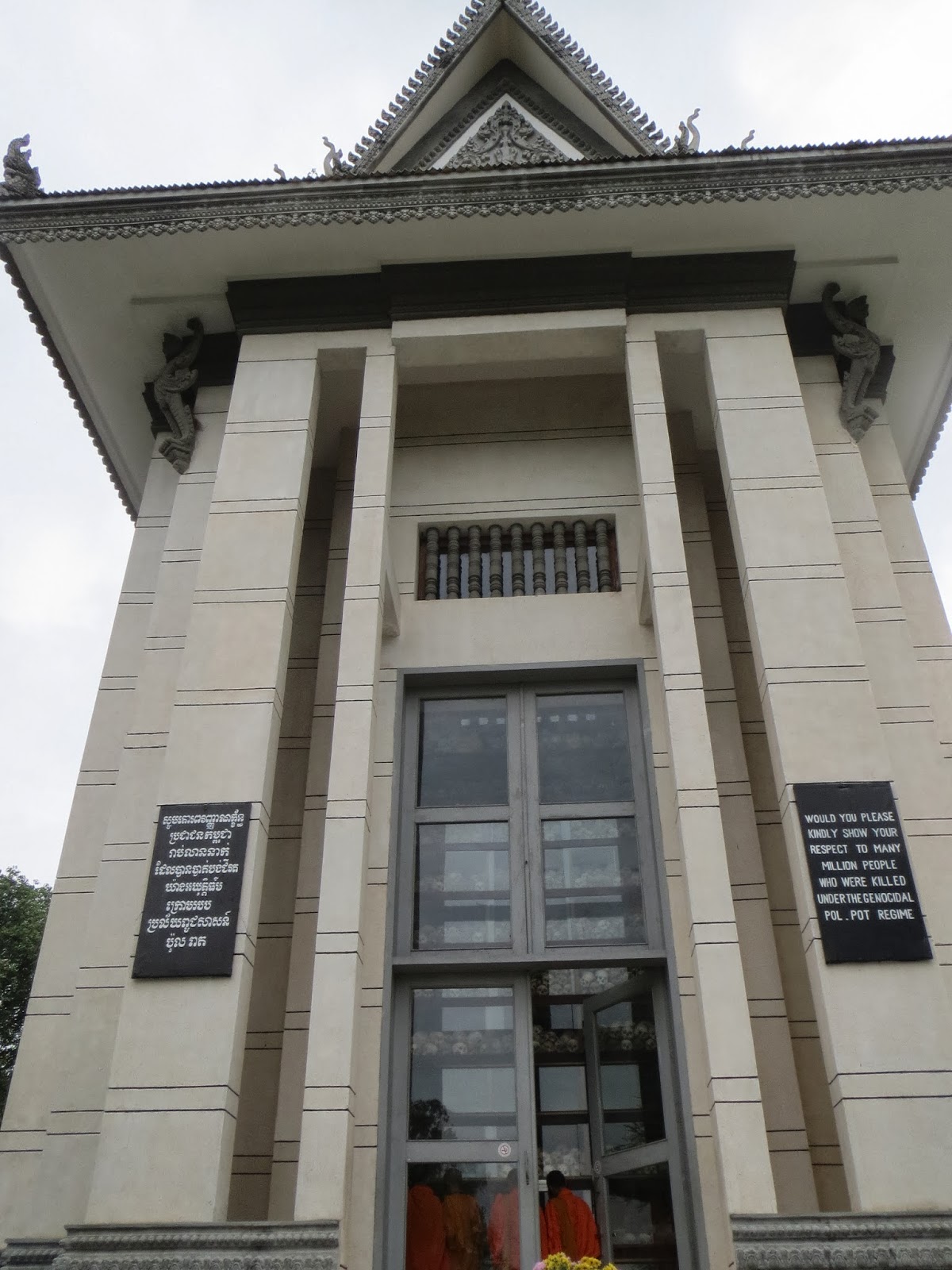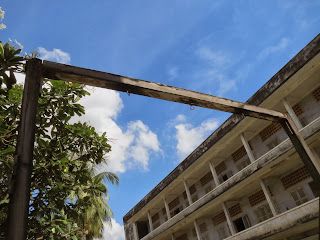After visiting some of Phnom Penh's most harrowing sights, S-21 aka Tuol Sleng Genocide Museum and The Killing Fields, the previous couple of days, it was a pleasant change indeed to visit one of the city's landmark buildings, the art deco Psar Thmel or Central Market.
According to one of the travel books I read, the huge domed hall resembles a Babylonian ziggurat. I just googled :ziggurat" and discovered it meant massive structures built in the ancient Mesopotamian valley and western Iranian plateau having theform of a terraced step pyramid of successively receding stories or levels. My/our new word for the day!! Some even claim the Central Market's dome as one of the biggest in the world. In any event, we thought it was beautiful and loved wandering around the array of stalls selling jewelry, clothing and curios.
We walked to the market from our hotel because they were both pretty close to each other. In hindsight certainly, that was a pretty scary walk as there we were pedestrians in a capital city trying to navigate our way across major roads and intersections with NO traffic lights or police officers to say when it even MIGHT be safe to cross. Don't forget too that there were motorcycles and tuk tuks all going both directions in the SAME lanes on every street. We just had to wait until there were cars trying to cross where we wanted to go because cars coming from another direction would certainly never stop for pedestrians!
We ended up going to the Market twice that day as we obviously wanted a little more excitement in our lives or, just possibly, because I wanted to buy more of the ultra thin cotton pants I had seen the first time! Glad we had taken out travel insurance before we left.
 |
| There was also a huge fish market at the Central Market as you can see above and below. |
 |
| Beauty above and beast below! |
 |
| Saw this sign, Nina, and thought of you! |
 |
| Our best meals the whole trip were at The Aroma Restaurant just down the street from our Silver River Hotel. I had the chicken stuffed with spinach and cheese and the most scrumptious mashed potatoes and veggies on the side. Hadn't had mashed potatoes the whole trip so my standards may have been a little low but even so, these were positively mouth watering. What I'd give right about now to go back to Phnom Penh if only for another stuffed chicken meal from this restaurant! |
 |
| Steven loved his chicken, veggie and rice dish but even he said after trying my chicken that he'd have that the next time. Only cost us $9.75 for both meals including beer for Steven. We ended up going back twice more to The Aroma when we returned from a few days in Kampot just so we could both have "my" chicken meal again as it was that good. |





















































































































